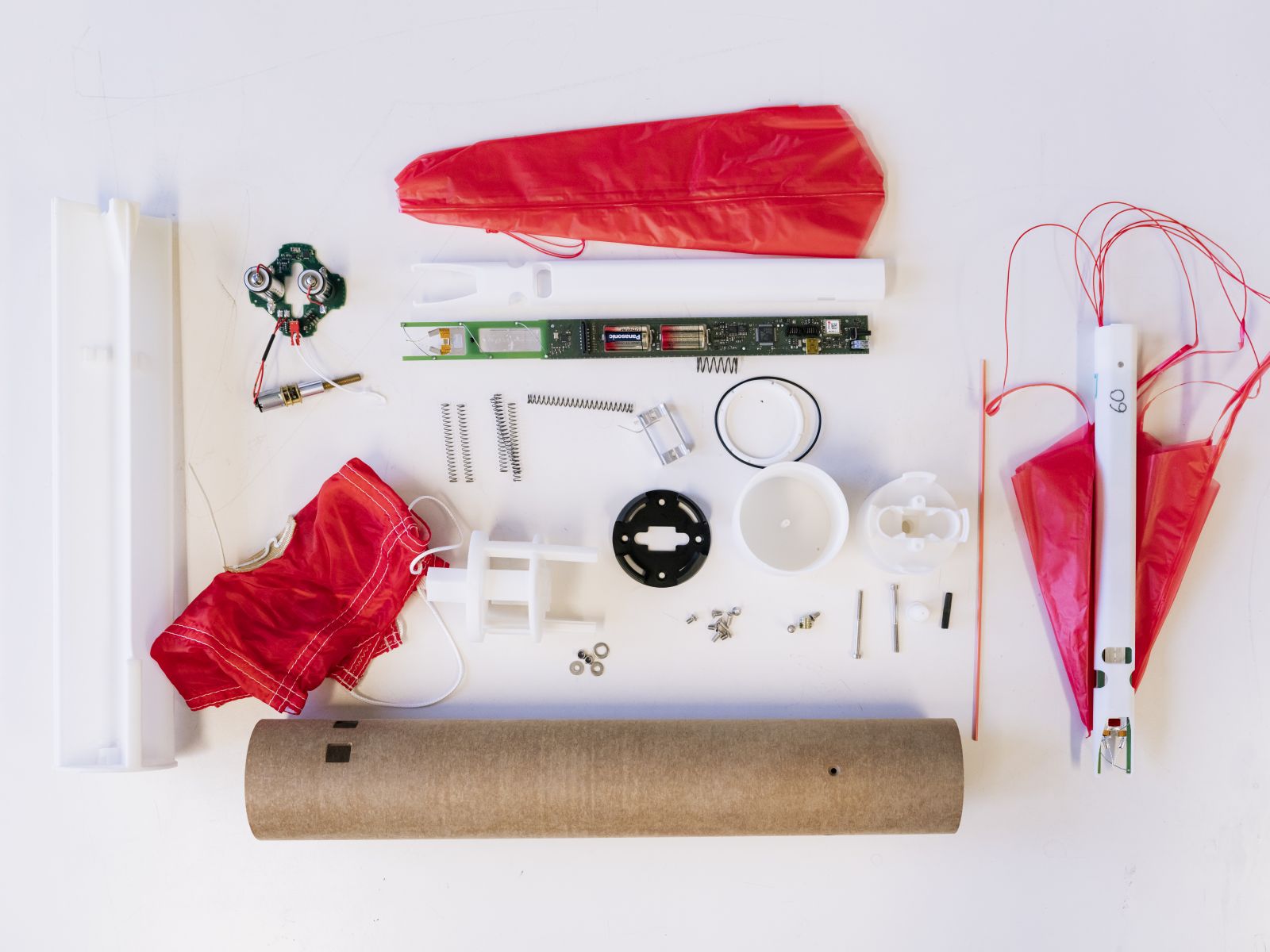KITsonde assembling week for NAWDIC

Fig. 1.: (a) Profiles of potential temperature anomaly (differences from the mean of all shown profiles) and (b) profiles of relative humidity sampled by the KITsonde near Córdoba (Argentina) on 06 November 2019. The distance indicated on the horizontal axis is the projection of the positions of the meteorological sondes onto the aircraft flight track.


The KITsonde is a modular multi-sensor dropsonde system that allows to simultaneously launch up to four meteorological measurement sondes from a research aircraft. Shortly after being dropped from more than 10 km above ground, the sondes are released from a discharge container and drift on diverging trajectories due to differently sized parachutes. When reaching the ground, the sondes have separated by up to 70 km, depending on the prevailing wind profile. Meteorological measurements and position data are sent to the aircraft every second, which allows to capture both vertical profiles of temperature, humidity, and wind at a resolution of around 10 m and the mesoscale variability of the troposphere (Fig. 1).
During the planned North Atlantic Waveguide, Dry Intrusion, and Downstream Impact Campaign (NAWDIC, https://www.nawdic.kit.edu/) in January and February 2026, the KITsonde system will be used together with remote sensing instruments on board of the German high-altitude and long-range research aircraft HALO (https://halo-research.de/). The central goal of NAWDIC is to sample dry intrusion air streams and frontal boundaries in extra-tropical cyclones over the North Atlantic to better understand and predict the processes leading to damaging wind storms and heavy precipitation events.

The unique and specially designed KITsonde system was developed at IMKTRO in collaboration with enviscope GmbH and Graw Radiosondes GmbH & Co. KG and is prefabricated only in small numbers. Members of the NAWDIC team as well as highly motivated colleagues of the institute now spent a whole week assembling release containers, cutting parachutes, and packing measurement sondes (Figs. 2 to 4). Thanks to this great collaborative effort, we have completed more than 20 release containers packed with a total of 60 sondes, which will be deployed for preparatory measurements during the ASCCI campaign (https://halo-research.de/sience/future-missions/ascci/) in March 2025. For NAWDIC, another 110 release containers equipped with 340 sondes will be prepared for airborne deployment. The measurements taken with the KITsonde system during both campaigns will be sent in real-time to the Global Telecommunication System (GTS) of WMO. This will make the data available to meteorological centers worldwide and allow the data to be assimilated into their numerical weather prediction systems.
